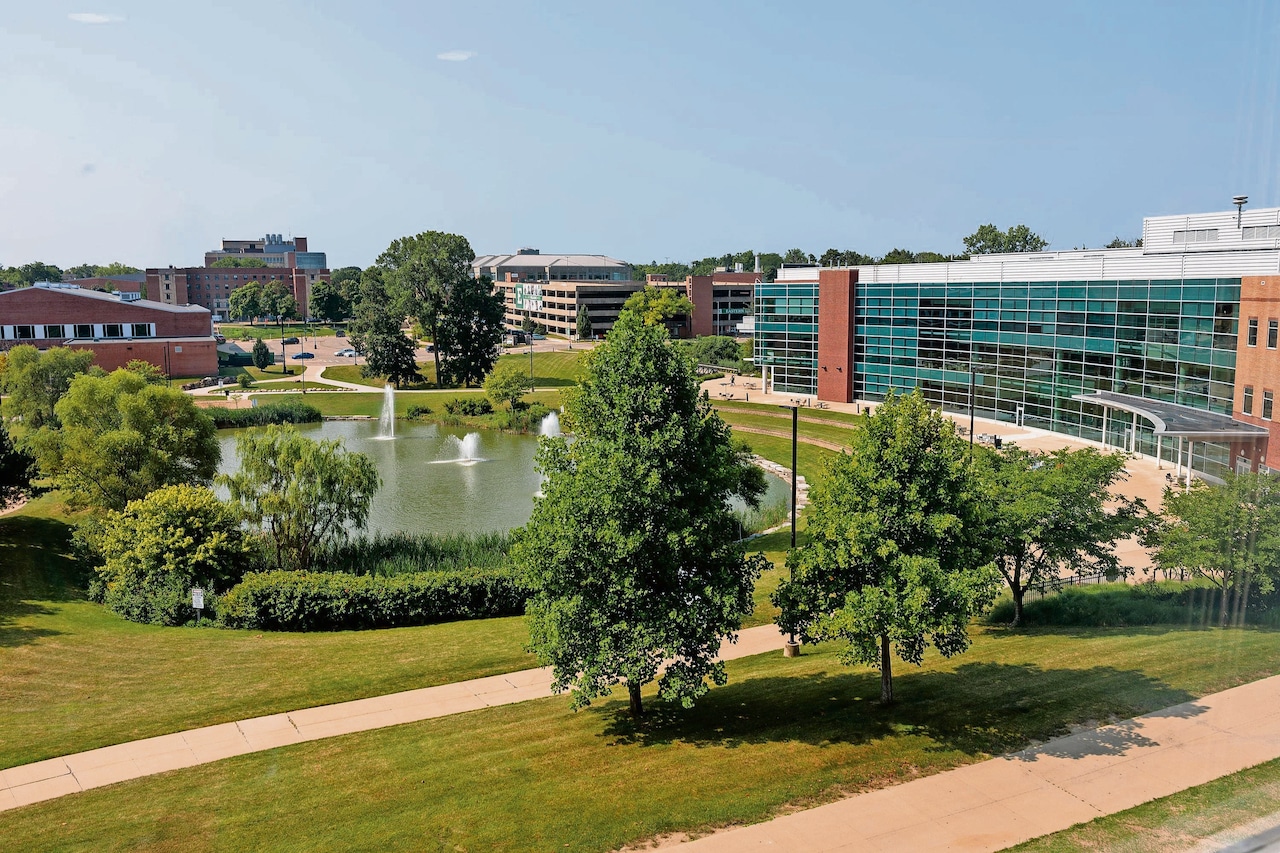
The final budget passed by state lawmakers early Friday includes a short range of support for financial aid that college advocates say should help make higher education more accessible to Michigan students.
But the budget’s higher education plan, which also marginally increases operational funds for all 15 of Michigan’s public universities and more than two dozen community colleges, may also fall short of some priorities that industry leaders stumped for as state budget talks rolled on this fall.
Brandy Johnson, president of the Michigan Community College Association, said the state’s lack of investment in school infrastructure for the 2025-26 budget year fell short of needs, especially at the community college level, where attaining technical skills and undergoing jobs training is much more prevalent than at their four-year counterparts.
The organization had also urged lawmakers last month to overhaul how they finance dual enrollment programs for Michigan’s public school students. That didn’t happen, Johnson said, but the budget includes language for a bipartisan taskforce that “will allow us at least to keep the conversation going and the momentum going.”
Legislators passed a final budget package early Friday, Oct. 3, more than two days after the start of the state’s fiscal year.
Overall, the deal drew criticism for shifting well more than $1 billion to higher education from the state’s School Aid Fund, which is typically used to support K-12 education.
Increase in operational funds
Finances for operations at higher education institutions are set to increase by roughly 3% at around $50.1 million for the state’s four-year universities and $10.9 million for community colleges.
For universities, the 2.8% operational increase can be broken down for each institution by the rate of change and total 2025-26 appropriation as follows.
Central Michigan: 4.7% to $102.4 million
Eastern Michigan: 4.7% to $89.2 million
Ferris State: 4.7% to $64 million
Grand Valley State: 1.9% to $101.7 million
Lake Superior State: 4.7% to $16.7 million
Michigan State: 2.1% to $333.8 million
Michigan Tech: 4.5% to $58.3 million
Northern Michigan: 4.6% to $57.3 million
Oakland: 2.1% to $75.6 million
Saginaw Valley: 2% to $35.4 million
University of Michigan-Ann Arbor: 2.1% to $373.4 million
UM-Dearborn: 2% to $32.7 million
UM-Flint: 2.7% to $27.7 million
Wayne State: 2% to $234.7 million
Western Michigan: 4.8% to $128.9 million
The rate of change for operational increases at two-year colleges range from 1.7% to 3% hikes.
Without some year-over-year, one-time funding, the total community college increase is closer to 2%.
“We’re thrilled it wasn’t cut or flat, but still, we struggle to keep up with inflation,” Johnson said. “So, good — not great.”
Dealing with the cost of college
State lawmakers added roughly $28.5 million was to Michigan’s tuition incentives for a total appropriation of $122.3 million, citing policy changes over the last several years that have increased the number of students eligible for the program that subsequently increased the cost.
The tuition incentive program covers different phases of education, encouraging eligible Medicaid recipients to complete high school by providing tuition assistance during student’s qualifying certificate or associate degree program and also during the student’s bachelor’s degree program.
The Michigan Achievement Scholarship, which helps recent high school graduates receive funds for continuing education, also retains $300 million in the higher ed budget.
This program also includes the Community College Guarantee, covering in-district tuition for local two-year institutions.
Michigan Reconnect, which helps adults 25 and older, was additionally funded at $42 million.
“We were just really thrilled that there was such bipartisan, bicameral support for those programs that make higher education affordable for families,” Johnson said.
The Michigan College Access Network also points to other budget changes as net positives for higher education, such as a $8.8 million increase in Promise Zone funding, or the $10 million to help local school districts meet FAFSA completion requirements.
Promise Zones are state-designated areas where college scholarships are available for all students, and FAFSA is the Free Application for Federal Student Aid.
“MCAN is encouraged to see that investments in K-12 and higher education investments have been maintained through a tough budget cycle,” MCAN Executive Director Ryan Fewins-Bliss said in a statement. “The path to a thriving economy and strong communities relies on ensuring that all Michigan students, especially students from low-income backgrounds, first-generation college-going students, and students of color, have access to quality postsecondary education that leads to good jobs and stable careers.
“It is crucial to our state’s future that we continue to increase educational funding and expand opportunities for our residents.”



